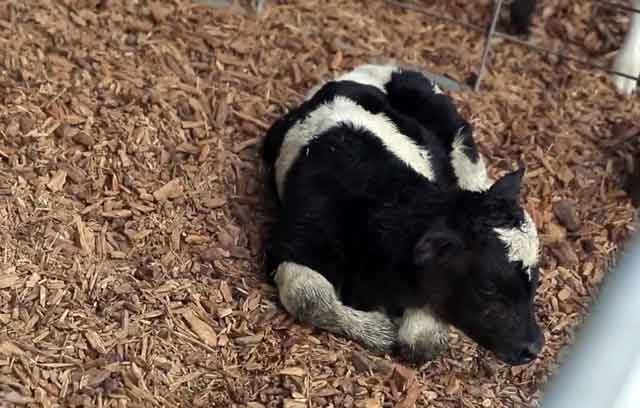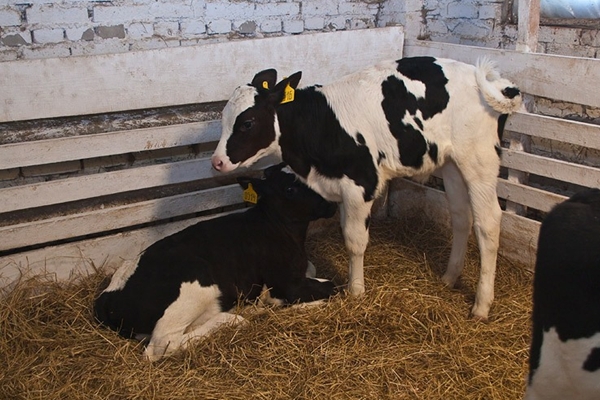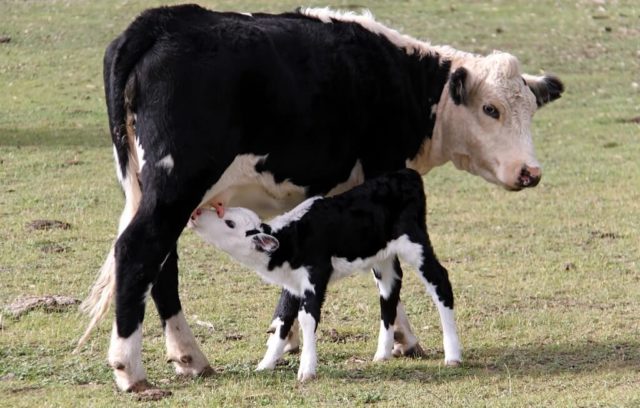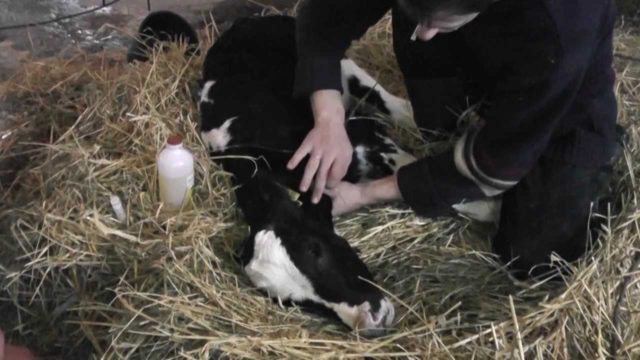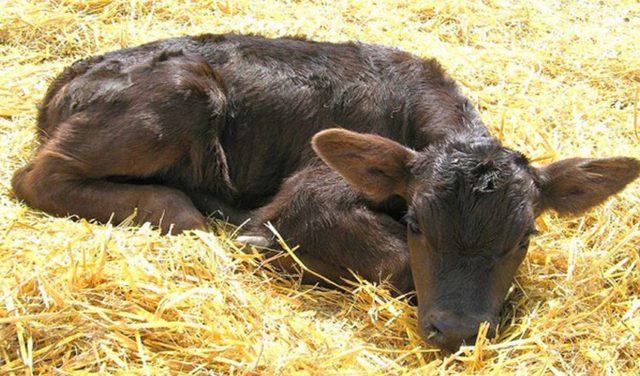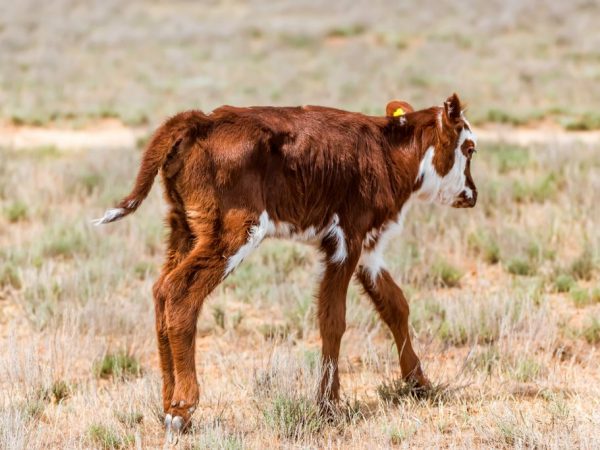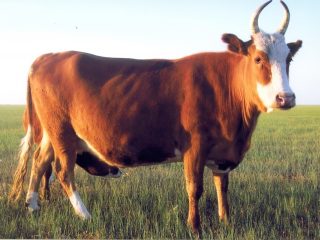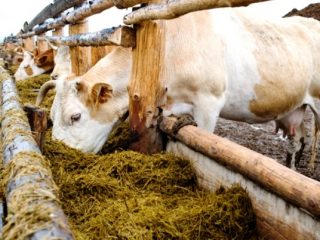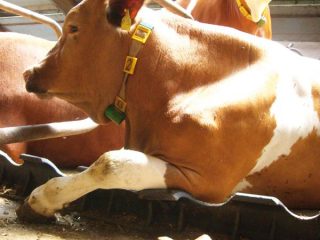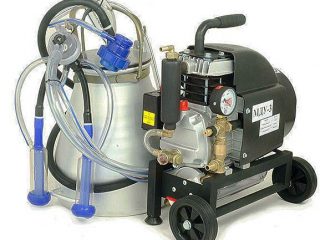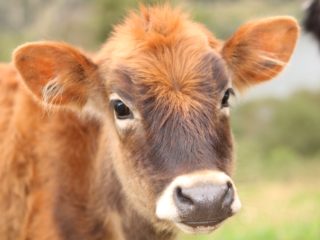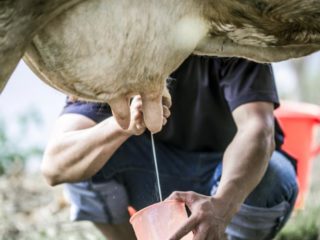Content
Dyspepsia in young calves causes the greatest damage in livestock farming. In the first 2 weeks of life, about 50% of newborn calves often die. Of these deaths, dyspepsia accounts for more than 60%.
What is dyspepsia
This is an acute disorder of the gastrointestinal tract. The disease is polyetiological in nature. Occurs in newborn young farm animals and is characterized by severe diarrhea. Calves and piglets are most susceptible to dyspepsia. Lambs and kids suffer the least.
Types of dyspepsia
In veterinary medicine, calf dyspepsia is divided into two types:
- organic (popularly “simple”);
- functional (reflex-stress). “Toxic” in everyday life.
At that time, a distinction was made between nutritional (due to feeding disorders) and viral dyspepsia. Some researchers combined these directions and believed that inadequate feeding leads to the birth of weakened young animals.The inability to resist infection that penetrates the gastrointestinal tract with the first sip of milk contributes to the development of the disease.
Causes of dyspepsia in young cattle
If calves were really that tender, all cattle would have died out at the aurochs stage, long before domestication. The main reason for the development of dyspepsia in newborn calves is the incorrect diet of the uterus. In the future, the disease is aggravated by disturbances in feeding young animals.
Organic dyspepsia
Develops in hypotrophic patients. The cause of this form of the disease is physiological immaturity. Calves with malnutrition are not able to properly absorb colostrum due to imperfections of internal organs and tissues.
Such calves adapt poorly to the external environment and are more susceptible to infections. They are more likely to develop casein bezoar disease.
In other words, in this case, dyspepsia is a consequence of malnutrition. The latter occurs due to improper diet and poor living conditions of the cow.
Functional dyspepsia
Occurs due to violation of the rules of feeding newborn calves:
- failure to maintain intervals between drinking sessions;
- feeding spoiled or chilled colostrum;
- incorrect height or rate of colostrum feeding.
Few people pay attention to the latter. But in fact, this factor often provokes dyspepsia. Even a one-hour-old calf, in an attempt to suckle the uterus, is forced to tilt its head to the ground and bend its neck. Colostrum is also released from the nipple in a thin stream. Thanks to this mechanism, the calf cannot drink a large amount of liquid in one gulp.
The situation is different with artificial soldering.A special drinking bucket or bottle with colostrum is usually positioned so that the calf's head is at the top. Colostrum flows through the nipple in a generous stream and enters the abomasum in large portions.
With such watering, the calf's secretion of rennet juice and saliva decreases. Colostrum coagulates in the rennet, forming large, dense clumps of casein. The latter is digested very poorly and begins to decompose under the influence of putrefactive bacteria. The result is toxic dyspepsia.
The same functional/toxic type of dyspepsia occurs under other circumstances:
- sudden change from colostrum to milk;
- drinking of defective colostrum;
- feeding cold or hot colostrum;
- drinking the first portion too late.
The first time the baby suckles from its mother is within the first hour of life. But on farms this regime is often violated, since with a large number of livestock and mass calvings, it is easier to take the baby immediately for hand-feeding. And the health of an adult cow on a dairy farm comes first. It often takes a long time for the calf to get its turn.
When colostrum is fed later than 6 hours after birth, putrefactive bacteria penetrate into the calf’s intestines, since the calf’s immunity has time to decrease. Pathogenic microflora decomposes the colostrum entering the abomasum and releases toxins.
Another severe stress for a calf is feeding cheap milk replacers with palm oil.
Symptoms of dyspepsia
There are two forms of the disease: mild and severe. Clinical symptoms of a mild form of simple dyspepsia appear 6-8 days after birth.This is the period when calves are usually transferred from colostrum to milk replacer or if the cow is in heat.
A symptom of such an intestinal disorder is very severe diarrhea. Otherwise the calf is alert and relatively cheerful. Appetite decreases slightly, body temperature is normal, and condition is quite cheerful. Death is possible if you do not pay attention to diarrhea and allow dehydration.
Toxic dyspepsia
It's also functional. It starts off mild. Under unfavorable conditions it develops into severe disease with general intoxication of the animal’s body. Dyspepsia begins with frequent bowel movements. Feces are liquid. Without treatment, the disease continues to develop:
- slight oppression;
- decreased appetite;
- lack of mobility and desire to lie down;
- fluid transfusion in the intestines, rumbling;
- Intestinal spasms and colic are possible due to this: restlessness, involuntary shuddering, sniffing the stomach, kicking the stomach with the hind legs, moaning;
- increased heart rate and breathing;
- the temperature is usually normal, a decrease signals the prospect of death;
- progress of dehydration: severe depression, loss of strength, sunken eyes, dull and tousled hair, dry nasal planum, lack of appetite, exhaustion.
The latest signs indicate that a mild form of dyspepsia has already turned into a severe one and there is a high probability of death of the calf.
Severe form
Dyspepsia begins immediately with a severe form in newborns. The disease develops on days 1–2 or in the first hours of life. Characterized by:
- lack of appetite;
- decreased body temperature;
- profuse watery diarrhea of yellow-gray color.Gas bubbles and lumps of coagulated colostrum are common in feces;
- coldness of the extremities and ears;
- trembling of the whole body;
- paresis of the hind legs;
- sunken eyes;
- dry skin;
- weakening of skin sensitivity.
The course of the disease is acute and lasts 1-2, less often 3-4, days. The prognosis is unfavorable. If the calf manages to recover, it remains susceptible to pulmonary diseases and is noticeably delayed in development.
If dyspepsia is already advanced and the case is close to death, the calf’s skin becomes bluish or pale, and the pulse increases.
Diagnosis of the disease
The diagnosis is substantiated after analysis of clinical signs, housing conditions and diet of the broodstock. Dyspepsia must be separated from colibacillosis, umbilical sepsis and diplococcal infection. For this purpose, the corpses of dead calves are sent to the laboratory for pathological studies.
For dyspepsia, medications do not contain microorganisms. When a calf dies from another disease, the following microflora is present in the samples:
- umbilical sepsisс – mixed;
- colibacillosis – gram-negative bacteria and microbes belonging to the Escherichia coli group;
- with diplococcal septicemia – Diplococcus septicus.
Pathological changes in dyspepsia in calves
The calf's corpse is usually emaciated. Soft tissues are dehydrated. The stomach is retracted. Sunken eyeballs. When opened, a dirty gray mass with a putrid or sour odor is found in the stomach. The abomasum contains casein clots with signs of disintegration. The mucous membrane is covered with thick mucus.
The intestines and pancreas are characterized by structural changes. In the mucous membranes of the intestine and abomasum, hemorrhages are observed: point, striped and diffuse.Fatty and granular degeneration of internal organs. The mucous membrane of the small intestine is swollen.
Treatment of dyspepsia in calves
Time does not stand still and treatment methods are gradually changing. Previously, complex treatment measures were used using saline solutions and electrolytes. Today they advertise an antibiotic that does not require any additional measures. But the antibiotic is good if dyspepsia was noticed at the very beginning, when the calf had not yet begun to undergo serious changes in the body. In other cases, additional measures cannot be avoided.
When treating dyspepsia, the first step is to review the diet and reduce the amount of milk consumed. One dacha can be completely replaced with a saline solution or an electrolyte of complex composition:
- liter of boiled water;
- baking soda 2.94 g;
- table salt 3.22 g;
- potassium chloride 1.49 g;
- glucose 21.6 g.
The solution is fed to the calf in a volume of 300-500 ml in 15-20 minutes. before each feeding of a portion of milk.
To prevent the development of pathogenic flora, antibiotics are injected intramuscularly. They are prescribed after analysis and isolation of microorganism cultures from corpses. Pepsin, artificial gastric juice, enzyme preparations, and ABA are soldered.
In case of severe dehydration, when the calf can no longer drink on its own, 1 liter of electrolyte is infused intravenously 3 times a day: 0.5 liters of saline sodium chloride solution and 0.5 liters of 1.3% baking soda solution.
Calves are also kept warm and given injections of heart medications.
Second treatment regimen:
- tetracycline. An antibiotic that suppresses intestinal microflora. 3 times a day intramuscularly for 3-4 days in a row;
- immunostimulant intramuscularly;
- drug against indigestion.Orally at the dose indicated on the package. 3 times a day. Course 4 days;
- glucose solution 5%. Replaces blood plasma, used to reduce intoxication and eliminate dehydration. 1 time intravenously.
The test calf that received this treatment recovered after a week.
Prognosis and prevention
In case of mild dyspepsia, the prognosis is favorable. If severe, the calf will die if measures are not taken in time. Even if he recovers, he will be far behind his peers in growth. It is highly desirable to prevent dyspepsia, but this requires a year-round set of measures:
- long-term pasture maintenance of broodstock;
- organization of good feeding of cows;
- compliance with launch deadlines;
- creating good conditions for calving;
- timely first and subsequent feedings of the calf;
- ensuring the cleanliness of milk pans and the hygiene of milk receipt;
- checking the quality of milk;
- compliance with sanitary and hygienic conditions in premises for newborn young animals: daily cleaning of cages, regular whitewashing of walls, periodic disinfection, elimination of crowding of calves, maintaining a comfortable temperature.
To prevent the development of dyspepsia, calves should not be overfed. In the first 5-6 days of life, the amount of colostrum fed should be 1/10 of the animal’s weight per day.
Conclusion
Dyspepsia in calves is almost always caused by mistakes made by the cattle owner. By following the necessary rules for keeping and feeding queens and newborn calves, the disease can be avoided.
